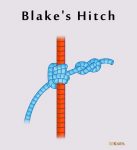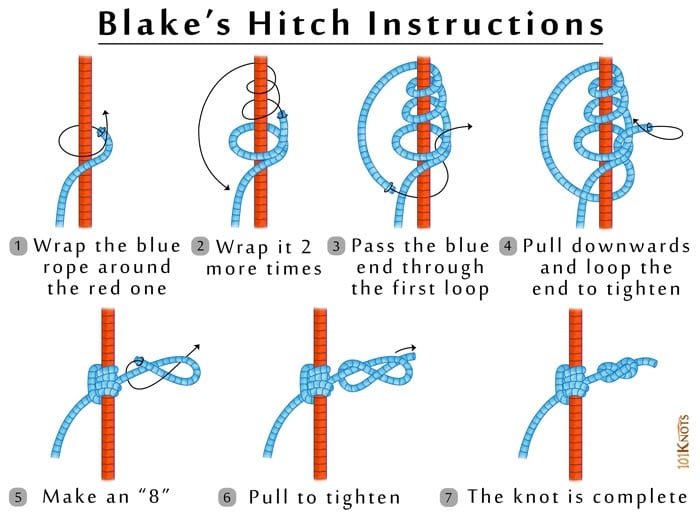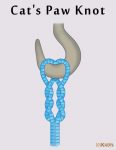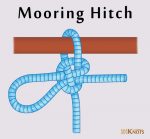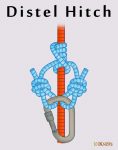Blake’s Hitch
This knot is named after Jason Blake who is credited with explaining the knot to fellow arborists in 1994. However, it was first mentioned by Heinz Prohaska in an Austrian Guides Periodical in 1981. Later, in 1990, Nylon Highway, a caving magazine, also referred to the knot. It is a friction hitch that they popularly used for ascending and descending ropes. It is also known by the names Swicero (Suicero) or Verones knot. It is stable and does not roll or creep along the rope.
How to Tie a Blake’s Hitch Knot
Tips
- The stopper knot made in step 5 is the figure 8 knot that provides the knot additional You can substitute it with a double overhand if you wish.
- It works well if the diameter of the static climbing cord is 12-13 mm (½ inch).
- To make it self-advancing replace the stopper knot with another Blake’s hitch that is tied to the rope that is going up, at a greater height. The primary Blake’s remains tied to the rope that is pulled down to advance the knot.
- For a self-tending version, just replace the second Blake’s hitch that is discussed in point no. 3 above with a bowline and pull down on the rope that bears the hitch.
- The strain should be taken only by the line below the hitch.
Variations
It has 2 traditional forms, 4/2 and 5/3 though other modifications can be made.
- The 5/3 version – Here, the tail end passes up after the bottom 3 turns of the coil that has a total of 5 turns.
- The 4/2 version – In this form, as depicted in the diagram above, the end passes up after the 2 bottom wraps of a coil that has a total of 4 turns.
In case of extra-slippery ropes, it is advisable to add a turn to the far end (the end away from the tucked tail). If the knot slips due to the stiffness of the thicker rope, it is a good option to add a turn at the near end resulting in a 5/3.
Advantages | Disadvantages |
|
|
Blake’s Hitch v/s Other Knots
- Taut line hitch – Not preferred by many as it is more prone to binding.
- Valdotain Tresse – Does not lock on you, a weakness that the Blake’s suffers from, at times.
Uses
- Tree climbing
- When used in combination with a micro (or regular) pulley helps in slack tending the line. It allows smoother movements when tied by the split tail method.
- By cavers.
- Tightening tarp.
How to Tie a Blake’s Hitch Knot Step by Step
- Wrap the blue rope around the red one
- Wrap it 2 more times
- Pass the blue end through the first loop
- Pull downwards and loop the end to tighten
- Make an “8”
- Pull to tighten
- The knot is complete

